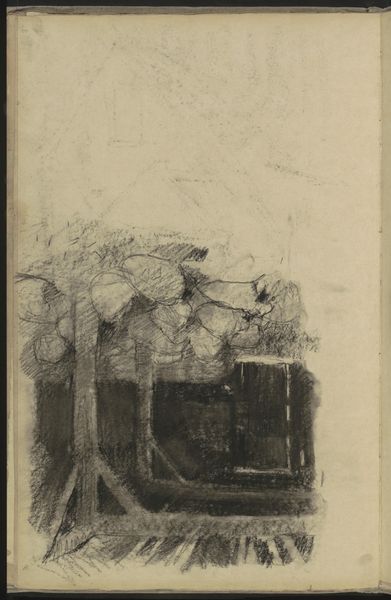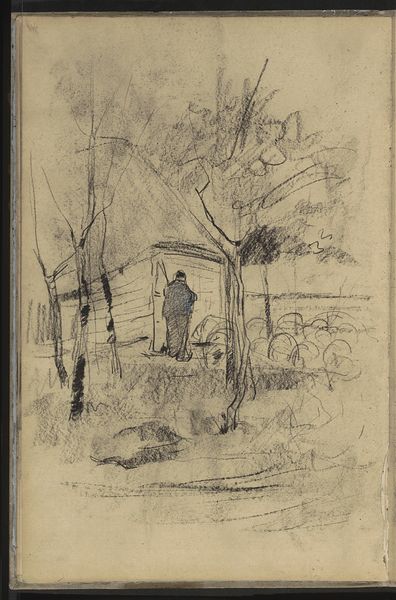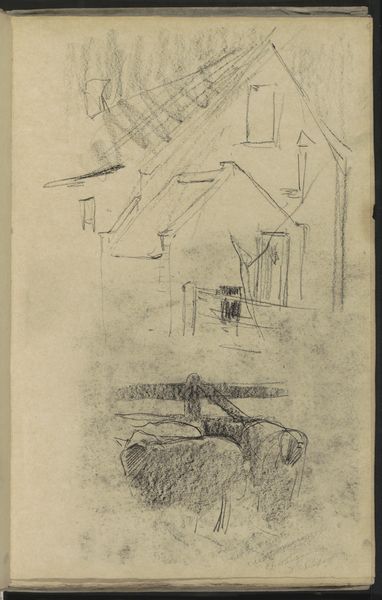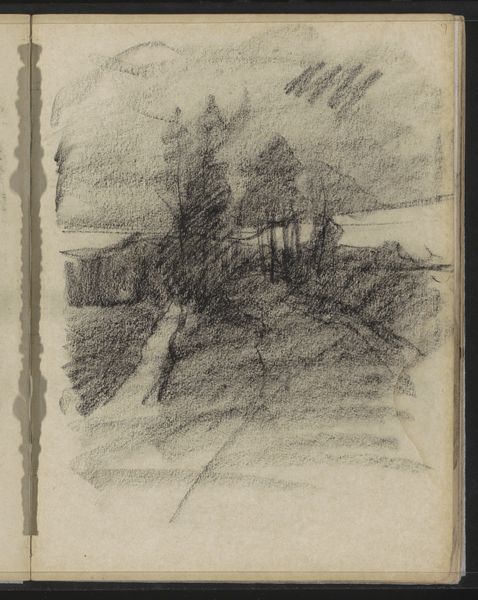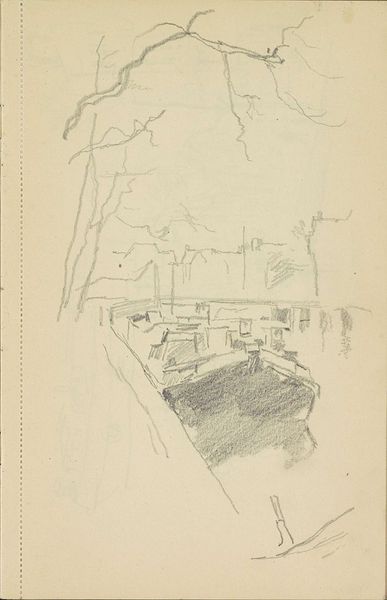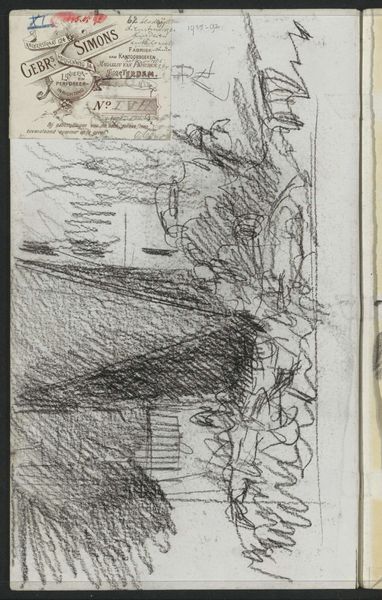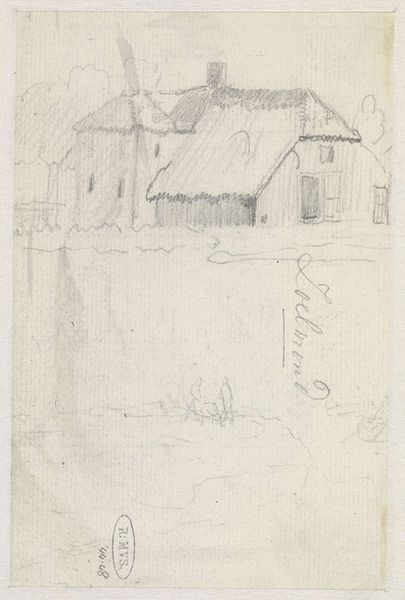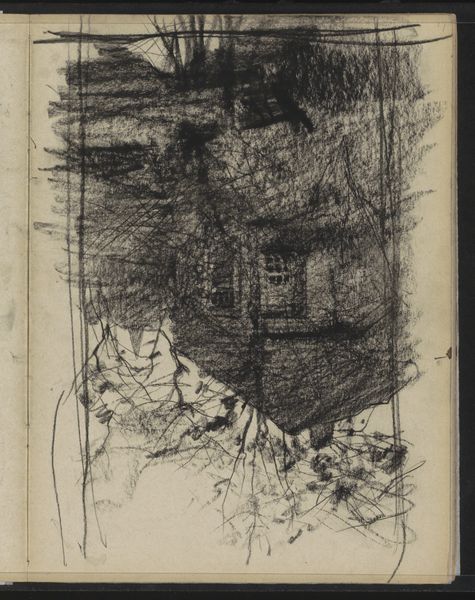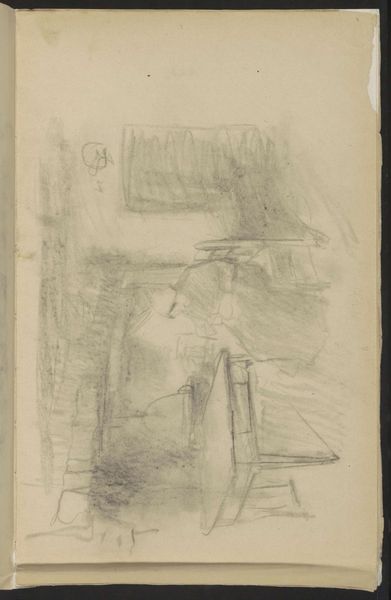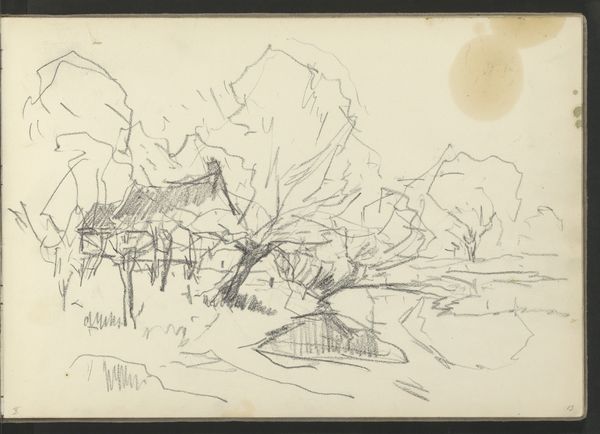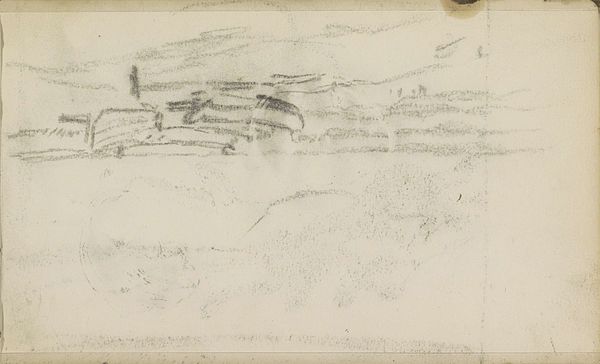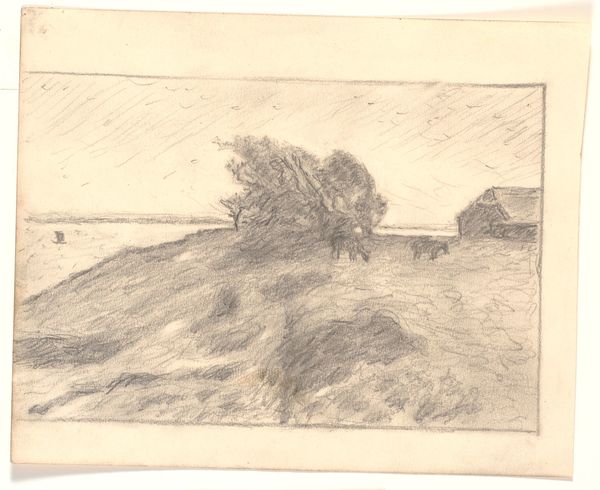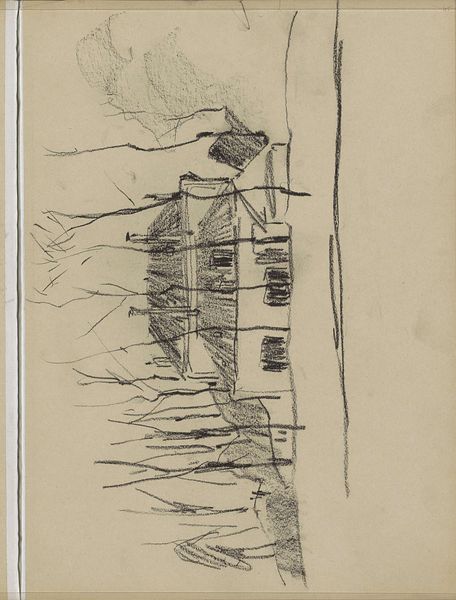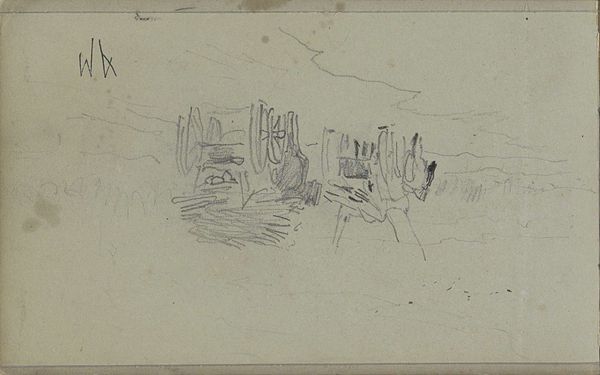
drawing, pencil
#
drawing
#
impressionism
#
pencil sketch
#
landscape
#
pencil
#
realism
Copyright: Rijks Museum: Open Domain
Willem Witsen made this drawing, Landschap met een boerderij, with pencil on paper. Witsen was one of a group of Dutch artists who found inspiration in the everyday, resisting the grand historical narratives so prized by the art academies. Here we see a farmhouse, sketched with soft, blurry lines. The lack of detail suggests that Witsen wasn't trying to capture a specific place. Rather, it evokes the mood of the Dutch countryside, the landscape that shaped the nation's identity and economy. Witsen and his contemporaries were very aware of their place in the history of Dutch art. They knew the great landscapes of the Golden Age were closely tied to national pride. By depicting the landscape in a modern way, they were asking questions about what it meant to be Dutch in a rapidly changing world. To fully understand this work, we might consider the manifestos and publications that debated the role of art in Dutch society at the time. Such resources help us see how artists like Witsen engaged with the pressing social and political issues of their day.
Comments
No comments
Be the first to comment and join the conversation on the ultimate creative platform.
